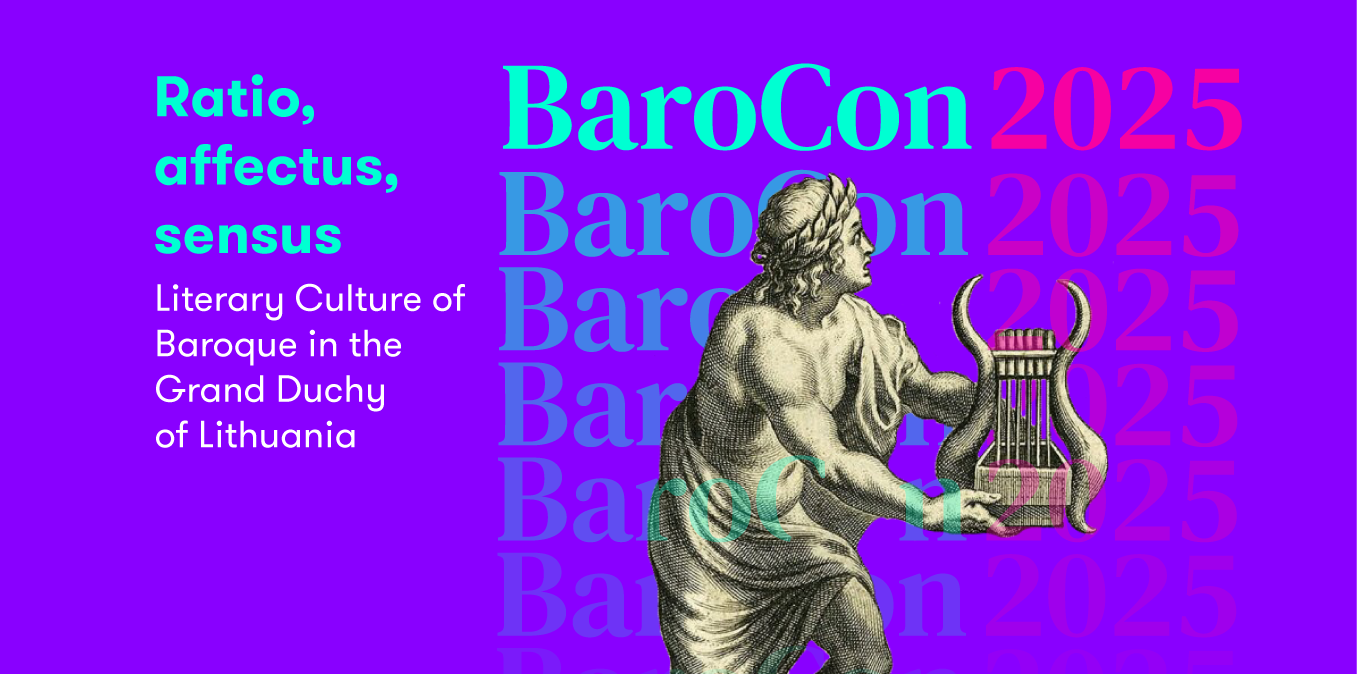Ratio, affectus, sensus: Literatūrinė baroko kultūra Lietuvos Didžiojoje Kunigaikštystėje
Prieš 400 metų buvo pirmąkart buvo išleistas garsiausias Motiejaus Kazimiero Sarbievijaus lotyniškos poezijos rinkinys Lyricorum libri tres (1625 m.), dėl to 2025-ieji metai Lietuvoje paskelbti Baroko literatūros metais. Abiejų Tautų Respublikos neolotyniškasis jėzuitų poetas Sarbievijus buvo vadinamas krikščioniškuoju arba sarmatiškuoju Horacijumi. Jo teorinės mintys apie poeziją ir retoriką tebėra vertinamos ir įkvėpia vis naujus Baroko literatūros ir autorių tyrimus, tad šis jubiliejus suteikia galimybę patyrinėti Baroko literatūrinės kultūros mastą ir įvairovę, kuri pastaraisiais dešimtmečiais sulaukė didelio susidomėjimo tiek akademiniame pasaulyje, tiek populiariojoje kultūroje. Šia proga Lietuvių literatūros ir tautosakos institutas bei Vilniaus universiteto Filologijos fakultetas rengia tarptautinę mokslinę konferenciją „Ratio, affectus, sensus: Literatūrinė baroko kultūra Lietuvos Didžiojoje Kunigaikštystėje“, kuri vyks 2025 m. rugsėjo 25–27 d. barokiniame Vilniuje.
Daugiadisciplininės konferencijos tikslas – paskatinti diskusiją apie „ilgojo XVII a.“ (nuo XVI a. pabaigos iki XVIII a. vidurio) literatūrinę kultūrą Lietuvos Didžiojoje Kunigaikštystėje. Šis istorinis laikotarpis, susijęs su dramatiškais pokyčiais ir visuotine kultūros krize, dažnai apibūdinamas prieštaringai, nuolatinėje įtampoje tarp proto ir jausmų, griežtos struktūros ir aistrų bei pan. Atsižvelgdami į šį prieštaravimą, kviečiame nagrinėti Baroko literatūrą ir jos raišką per dinamiškos proto (ratio), emocijų (affectus) ir jausmų (sensus) sąveikos prizmę, kurią galima įžvelgti įvairiuose šio laikotarpio žanruose ir vėlesnėje jų recepcijoje, išlaikančioje barokinę dvasią.
Kviestiniai pranešėjai

Ona Dilytė-Čiurinskienė
Vyr. mokslo darbuotoja, LLTI
Prof. Stephen Harrison
Oksfordo universiteto profesorius
Frans-Willem Korsten
Two Republican Baroques: The Dutch Republic and the Polish-Lithuanian Commonwealth
Frans-Willem Korsten
Leiden University
Two Republican Baroques: The Dutch Republic and the Polish-Lithuanian Commonwealth
Keywords: sovereignty, republic, republican Baroque, network, empire
In 1635 the most famous Dutch poet of his times, Joost van den Vondel, wrote a poem entitled “The Truce between Poland and Sweden.” Vondel’s interest in the truce and the region was clearly motivated by the vast trade interests the Dutch Republic had in the Baltic. There were also cultural-political interests, however. As opposed to a royal, papal, Southern-European dominated Baroque, the Dutch Republic came to life aesthetically and politically through a Northern-European, republican Baroque. The latter connoted a conceptualization of sovereignty that was both unstable and powerful. Unstable because it did not depend on one, coherent, center of supreme power but on a complex trade-network of cities and states. Still, this bottom-up network also came to embody an imperial power. Here the Dutch Republic resonated with the Polish-Lithuanian Commonwealth. Both had mutual interests commercially speaking, since for Amsterdam trade with the region was defined as Moedernegotie: the mother of trades. Yet the two also had political resonances since the Commonwealth was far from a regular kingdom and was also indicated as the First Polish Republic. Its “Golden Liberty” prefigured in a sense the Baroque epitome of the Dutch Republic: the period of “True Freedom”. Following two Dutch diplomatic missions, in 1627–28 and 1635, I will first consider Paul Hulsenboom’s analysis of how diplomacy and poetry were intrinsically related at the time. Then I will consider a more radical entanglement of politics and aesthetics in that the Dutch Republic found a Baroque companion in the Polish-Lithuanian Commonwealth, which consisted as much in a bottom-up network instead of being ruled by a supreme power. Both, that is, found an aesthetic expression of their political nature in a republican Baroque.

